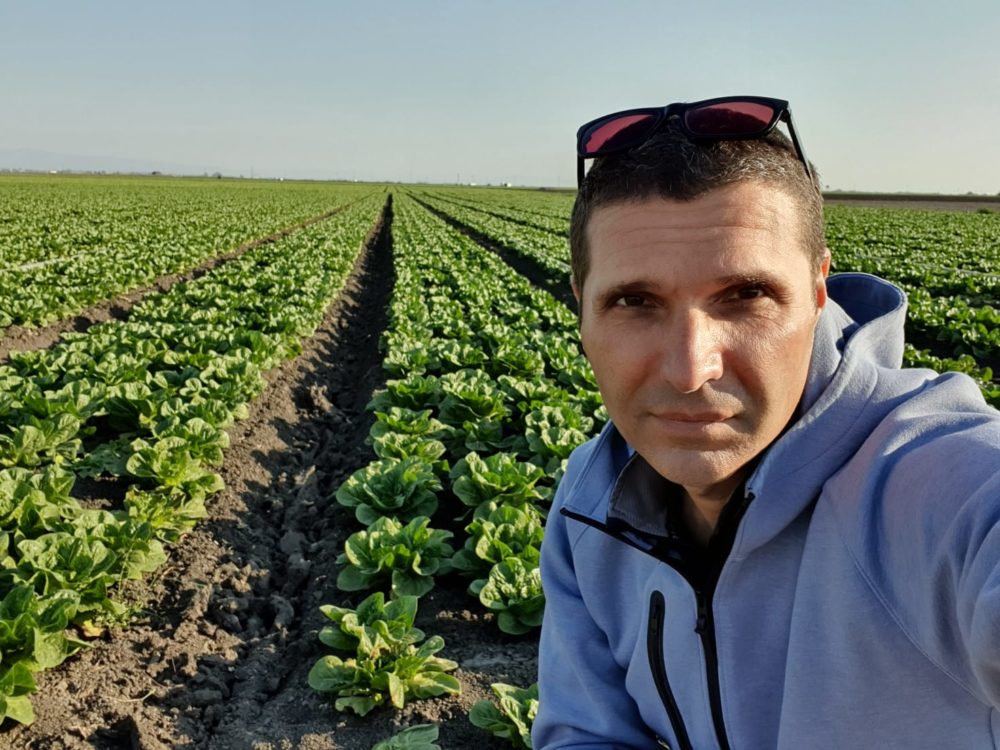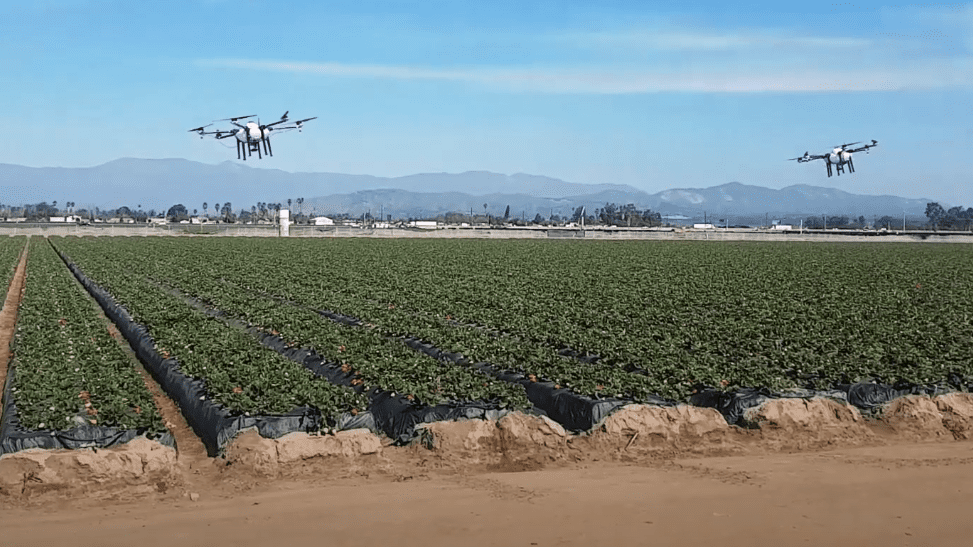When AgFunderNews last spoke with agricultural drone tech company LahakX, the company had just completed Federal Aviation Administration regulatory requirements and was readying its spray drones for fields in Monterey, California.
Nearly a year and a half later, the company has secured a new patent and launched a partnership with Aero Systems West (ASW), a US-based drone manufacturer specializing in heavy-lift machines.
The partnership came about after LahakX, founded in 2017 and based in Salinas, California, started getting increasing requests from its customers to cover more acres and spray more gallons.
LahakX specializes in spot-spraying via autonomous drone swarming. Rather than manufacture the drones itself, the company designs the logistics of swarming, where groups of drones can coordinate with one another on tasks, often without human intervention.
Bringing ASW’s heavy-payload drones into the equation creates what LahakX CEO and co-founder Eylon Sorek calls “the sweet spot” of agricultural spray drone technology. By his reckoning, successful spray drone efforts in agriculture will include both large and small drones working together as a swarm operation to cover more acreage effectively.
Via the partnership, ASW will build the new drones, while LahakX will create the swarm planning and autopiloting capabilities. The read-to-fly offering will be available to new and current customers in California.
“Swarming is one way to do it. Heavy-payload drone is another way. Through this partnership, we’ll be able to do both,” says LahakX cofounder and CTO Dr. Itzik Turkel, LahakX.

‘Things needs to be done dramatically differently’
“There’s too big of a gap between the promise and execution of drones,” Sorek tells AgFunderNews, adding that the gap is typically measured in “how many gallons or how many acres you can do.”
“The big marketing statements talk about doing 60 acres per hour or 50 acres per second, for example. This is based on calculations made in Excel spreadsheets, not in the field. And it’s based on assumptions for spraying two to three gallons per acre, which is a very niche application.”
He says LahakX learned from its own customers, in Monterey County, California, that two, three or even five gallons may not be enough.
“You can do side jobs, you can do niche applications. You can be a type of a 911 for some cases. But if you really want to build a big business with spray drones, things needs to be done dramatically differently.”
On the flip side, he says, “It’s not good enough to have a single big drone. The big drones do mostly only broadcast spraying; they can’t do super-precise initial applications because they’re too big.”
“The reality of spray drones is is that logistics and operations are something that need to be really designed for continuous, scalable, strong operation,” he adds.
The key is to combine the two, which is where the partnership with ASW comes in. Their combined efforts create a system in which larger drones can quickly cover the middle of the field while smaller ones can move more slowly along the edges.
“On the edges of the field, they need to be really accurate because there might be neighboring growers or neighboring crops. You don’t want any drifts. You want to cover [the edge] with smaller drones to be more precise and slow,” notes Sorek.
The fleet can be assembled in a variety of configurations that could potentially improve spraying time and performance across the field. Sorek says wildfire prevention is another possible application for this setup.
“In swarming, people tend to think of identical drones working together,” he says, adding that LahakX just received approval on a patent for its technology.
“We would like to have the flexibility for different drones with different performance to collaborate in a similar way and have a modular approach that may be flexible to different types of pesticides or weather conditions or application requirements.”
What’s next
US-Israeli research organization the BIRD Foundation partially funded the partnership. The non-dilutive funding can reach up to 50% of the total cost of the project, which includes not just the end product but also licensing and commercialization.
“It’s a good boost for both companies,” says Sorek, adding that both companies will retain their own intellectual property.
The project will start in Monterey, where both companies are located and where there’s ample acreage for appropriate crops such as leafy greens and strawberries.
“They are low-canopy crops that [have to] get sprayed a lot and almost all year long. I feel very comfortable being in Monterey County, where there is a lot of land and a lot of activities that require this type of solution.”
He notes one other factor the companies believe is an important element of the partnership: that the end product is fully made in the US.




